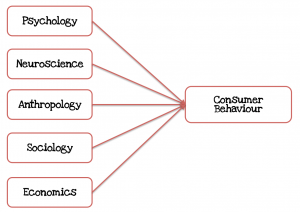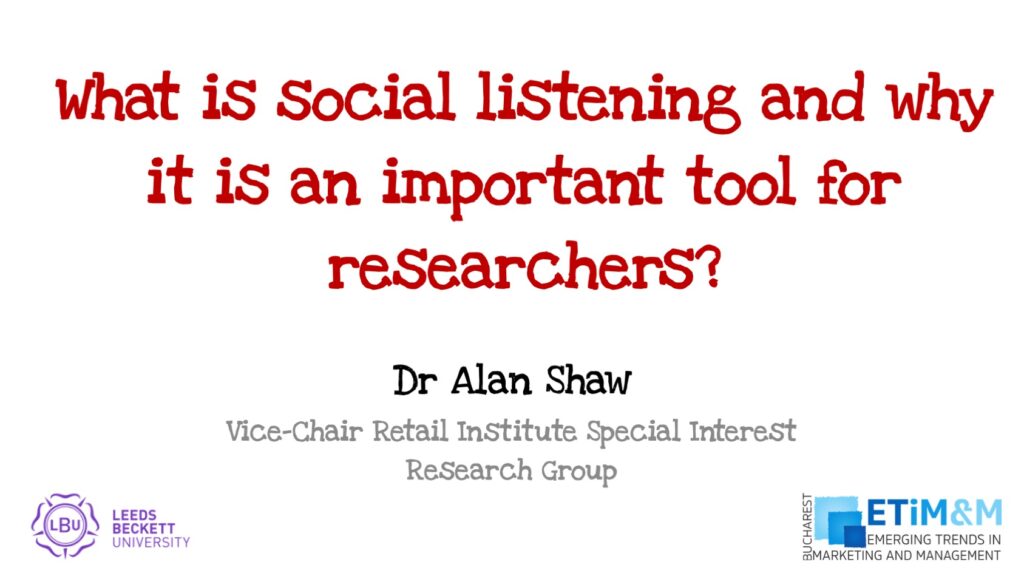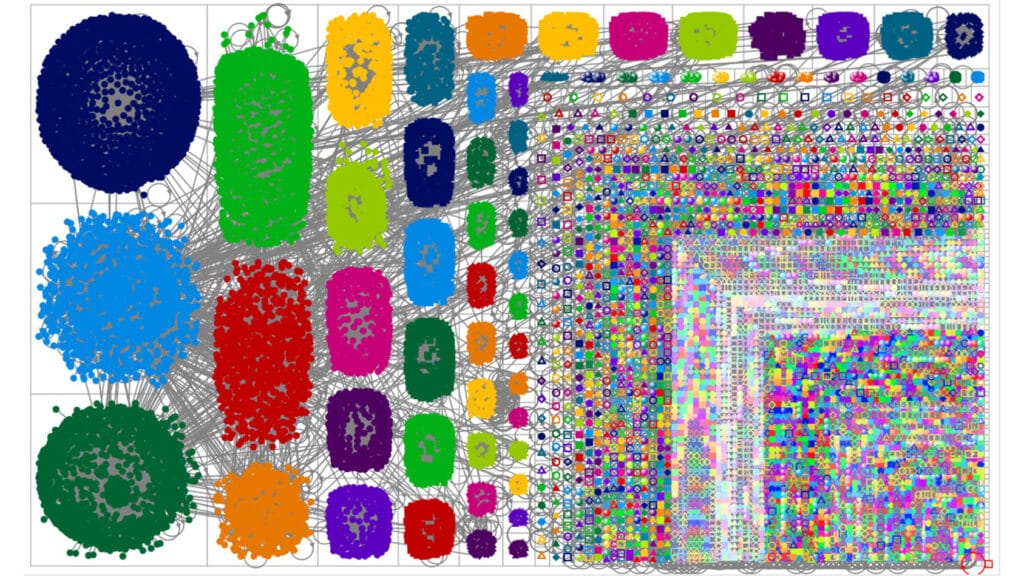This is part one in a series of articles looking at consumer behaviour from a marketing perspective. Consumer behaviour can be considered as the activities people undertake when obtaining, consuming and/or disposing of products and services. It is the understanding and anticipation of these activities that will help brands maximise their reach (and profits).
Blythe (2013) stated that consumer behaviour was made up of an individual’s thoughts (or cognition), their emotions (or affect) and their intended behaviour (or connotation), which when linked with personal and environmental factors will result in an activity (i.e., the behaviour): see figure 1.

Figure 1: The Consumer Behaviour Model
This model can be difficult to understand and is best explained with an example: consider Joe who is feeling hungry (cognition), at that point in time Joe was also in a decadent mood (emotion). It was midday, i.e., lunchtime: Joe was planning to eat (connotation). Joe had just been paid and was meeting some friends in the city who were very extravagant. The result of all this was, Joe had lunch at a very expensive restaurant with his friends. Now, a slight deviation in any of these factors would change the final outcome:
- If Joe were not hungry would he have gone to the restaurant?
- If Joe were feeling frugal would he have opted for a sandwich instead?
- If it had not been lunchtime, could Joe take time off work to eat with his friends?
- If Joe had not just been paid could he have afforded such an extravagant meal?
- If Joe was working in the country would he have time to travel to the city to eat?
Marketers face a difficult task in applying the model (figure 1) to their every day activities. A better way may be to consideration the ‘Antecedents of Consumer Behaviour’ (see figure 2). This is because the factors identified in figure 1 are all embedded in these antecedents, which are more closely related to the marketing process.

Figure 2: Consumer Behaviour Antecedents
Psychology is the scientific study of the human mind and its functions, especially those affecting behaviour in a given context. It is this aspect that drives the motivation of an individual to love or hate a product or service. One could argue that the product’s branding (image) plays an important part in the process, so the marketer has to ensure he/she gets the ‘product’ element of the marketing mix right for the required market.
Neuroscience is closely linked to psychology, it is the study of how the nervous system develops and affects the cognitive functions. Here the marketer can focus on ensuring the targeted individual has the ability to engage with the brand or in terms of the marketing mix (or the extended marketing mix) it can be considered as the process: i.e., is it online, does it require membership, can it be obtained through a retail outlet, etc.
Anthropology is the study of humans, past and present. One aspect of this discipline, which is particularly relevant to marketers, is the understanding of the cultural differences that exist in the market and how it can influence the development of a campaign. One could argue that the ‘Place’ factor of the marketing mix plays an important part of the process: i.e., the marketer will adjust the campaign depending on the geographical area.
Sociology is the study of how society is organized and how we experience life. There are a number of synergies with anthropology but in this context we are focusing on the different social constructs that exist in different cultures. For a marketer the segmentation of the target market will include a variation of the different social groups that exist.
Economics is the study of the production and consumption of goods and the transfer of wealth to produce and obtain those goods. In this context the focus has to be on Microeconomics, where it is the actions of individuals and industries, like the dynamics between buyers and sellers, borrowers and lenders. From a marketing perspective it is the price that will drive the behaviour: i.e., is it too expensive or cheap? Is it considered as an aspirational product?
To conclude, consumer behaviour is a complex subject and many marketers struggle to apply it to their brands but when considered in terms of its antecedents there are clear associations to the marketing process. Next time I will introduce you to the classifications of human motives and Maslow’s Hierarchy of Needs.
References:
BLYTHE, J., 2013. Consumer Behaviour: SAGE Publications. London, Sage.
Alan Shaw
Latest posts by Alan Shaw (see all)
- What is social listening and why it is an important tool for researchers? - July 31, 2021
- COVID-19 and Remote Learning: Experiences of parents supporting children with SEND during the pandemic. - June 30, 2021
- Using Netnography To Evaluate The Launch And Collapse Of The European Super League - April 21, 2021
- Developing Semi-Structured Interview Questions: An Inductive Approach. - April 9, 2020
- Developing Semi-Structured Interview Questions: A Deductive Approach - April 9, 2020















